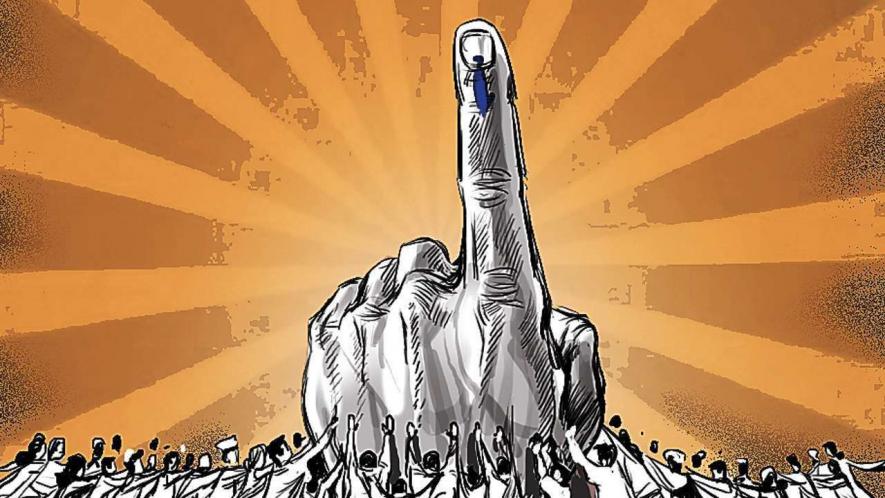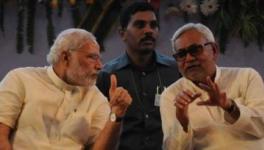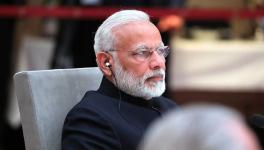Will Chemistry Beat Arithmetic in Bihar Election?

Representational image. Image Courtesy: DNA India
With just ten days to go for the first phase of the Bihar Assembly election, a closer contest than initially anticipated is on the cards. To many observers, the National Democratic Alliance seemed invincible just about a month ago, but that was until alliances were firmed up and the Lok Janshakti Party (LJP) decided to break ranks in the state.
The NDA might have the arithmetic going for it on account of Bharatiya Janata Party (BJP) dominance among upper caste voters and the base among Kurmi, Koeri, Mahadalit and OBC voters of the JD(U). In the 2015 state Assembly election, the JD(U) bagged nearly 17% of votes, the BJP just over 24%, and the LJP 4.83%. What remains to be seen is whether these numbers, now on paper, would translate to actual votes. Bihar Chief Minister Nitish Kumar has to contend with three-term anti-incumbency and latent public anger on account of the treatment meted out to the migrants returning to Bihar.
A desperate Nitish Kumar’s efforts to invoke Lalu Prasad Yadav’s “Jungle Raj” from the past may not work for him with a large demographic of youth. As well, the RJD’s socialist moorings ensure there is ideological coherence and chemistry within the Mahagathbandhan or Grand Alliance. Notwithstanding that the numbers are not in its favour, there is a major possibility that this RJD-led alliance would stun poll pundits on counting day. With a large constituency of youth cutting across the urban and rural divide palpably angry with Nitish Kumar on account of the lack of jobs and opportunities, many additional segments beyond the traditional base of the Mahagathbandhan could vote for it.
Before going any further, one needs to recall the election trends leading up to Bihar and, how poll outcomes in the Lok Sabha and Assembly have differed greatly even in a span of months. Anti-incumbency has been a decisive factor in many recent Assembly elections despite much ink spilled on the appeal of Prime Minister Narendra Modi. Accordingly, Nitish Kumar’s popularity has seen a massive dip leading up to the polls and his contentions of being an efficient administrator too has suffered on account of his poor handling of the migrant exodus, floods and interventions or lack thereof on the Covid-19 front. His assiduously built-up image as “Susashan Babu” is being chipped away not only by the Opposition, but also his new-found rival in LJP’s Chirag Paswan, muddying the waters with his high-pitched rhetoric against the chief minister. City-bred Paswan might be raw and untested, but his “Bihar first, Bihari first” campaign hits all the right notes and he could also additionally reap some sympathy votes following the demise of Paswan senior.
The LJP’s decision to contest separately was interpreted in two ways: the BJP gathered well in advance that there is a massive sentiment on the ground against Nitish Kumar. Fielding the LJP as its proxy would ensure there is a split in the anti-incumbency vote, thereby restricting the damage that the Grand Alliance could inflict on its prospects. That such a strategy might also help cut Nitish Kumar to size and possibly lead to a situation of installing its own chief minister was an added bonus. With the LJP fielding all its candidates against the JD(U) and not the BJP, such an outcome cannot be ruled out. However, there seems to be a late realisation within the BJP that this strategy could backfire if Paswan could swing the crucial Dalit votes away from the ruling alliance—which explains the BJP’s posturing in recent days.
As for the Mahagathbandhan, the Rashtriya Janata Dal (RJD)’s logic of allocating 70 seats to a waning Congress and 29 seats to Left parties was called into question. It seems Tejashwi Yadav realised the futility of having many smaller caste-based parties in the alliance who may abandon ship at the first opportunity in a post-poll scenario. It is also doubtful whether leaders of caste parties—including Upendra Kushwaha and Mukesh Sahni—really command caste loyalty if one were to extrapolate results from the past. The Kushwaha (Koeri) have voted generally in tandem with the Kurmi social group, and the Nishad communities represented by Mukesh Sahni have traditionally voted for the BJP. While they might add incrementally to the BJP base, they do not command a loyal vote bank like a Ram Vilas Paswan did.
Here it must be noted that the RJD, Congress and Left plus others got 18.35%, 6.6% plus roughly 7% of the votes. The RJD’s core vote bank being the Yadav-Muslim combine, having Congress in the alliance ensures there is no split in this vote base, apart from the possibility of the grand old party swinging some upper caste and Dalit votes towards the Grand Alliance. And the Left parties, despite being limited to pockets, have the capacity to transfer their votes, which is not often the case with caste-based outfits. The CPI (Marxist-Leninist) Liberation, contesting in 19 seats, supposedly has the largest cadre on the ground apart from the RJD and the BJP and this manpower would be a huge asset to the alliance.
There is also a “Third Front” in the fray with Upendra Kushwaha as its chief ministerial face, backed by AIMIM of Asaduddin Owaisi [0.21% vote share in 2015], the Bahujan Samaj Party [2.07%], Devendra Singh Yadav’s Samajwadi Janata Dal Democratic (SJDD) [0.01%] among others. Whether AIMIM can make inroads into Bihar’s Seemanchal region at the expense of the Mahagathbandhan is a talking point. This third front could also cut into the OBC vote base of the JD(U), if at all this disparate combination can make an impact.
Since there are so many factors at play, predicting the outcome would be quite impossible. One thing is certain: the post-poll phase of this election will be the most crucial. There is every chance that the Grand Alliance will do better than predictions. The swing voters should choose the RJD-led alliance as the alternative option.
Nitish Kumar’s chief ministerial position would be a non-negotiable clause regardless of the final seat tally. Any attempts by the BJP to install its own chief minister could see major political realignments. It would not be beyond Nitish Kumar to discover his secular credentials in such a scenario.
The author is an independent journalist and former editor, The Kochi Post. The views are personal.
Get the latest reports & analysis with people's perspective on Protests, movements & deep analytical videos, discussions of the current affairs in your Telegram app. Subscribe to NewsClick's Telegram channel & get Real-Time updates on stories, as they get published on our website.























